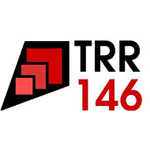
Seminar über Theorie der kondensierten Materie / TRR146 Seminar
Nov. 7, 2006 at
1:15 p.m.
in
Newton-Raum (01-122, Bau 2.413)
F. Schmid
friederike.schmid@uni-mainz.de
P. Virnau
virnau@uni-mainz.de
L. Stelzl
lstelzl@uni-mainz.de
Glass-Transition of Entropy Production and Entropy Freezing-in and the Third Principle of Thermodynamics
Prof. Dr. Ivan Gutzow (Bulgarian Academy of Sciences, Sofia (Bulgaria))
A survey is given of classical and of new phenomenological approaches in describing glass-transition and the nature of vitreous states, beginning with Simon’s approximation (1928/32)and Prigogine’s thermodynamics of vitrification (1954).
It is shown, that considering glass-transition in the framework of thermodynamics of irreversible processes as taking place not at a distinct temperature, but in a broader interval of increasing deviation from equilibrium, not only entropy freezing-in, but also entropy production has to be accounted for. Thus in both the quenching process of vitrification and in the subsecuent heating-up run of the glass, entropy is accumulated in the system. The consequences of such an approach are analyzed in details in constructing both the kinetics of glass transition and in establishing the temperature dependence of the thermodynamic functions of vitrifying systems, of the temperature course of their vapor pressure and solubility, in reconsidering the value of the Prigogine-Defay ratio and its thermodynamic significance etc.
Glass-transition is analyzed as an example, demonstrating the extent to which the Third Principle of thermodynamics can be applied to irreversible processes, and how its formulation has to be appropriately chosen to describe also frozen-in non-equilibrium states (glasses, defect crystals). In doing so the main emphasis is not given as usual on Simon’s frozen-in value of the configurational entropy of glasses, but on the temperature course of their specific heats at temperatures approaching absolute zero.
A detailed comparison with experiment is made and the possible applications of systems with frozen-in disorder as sources of accumulated energy and of increased chemical activity is discussed.